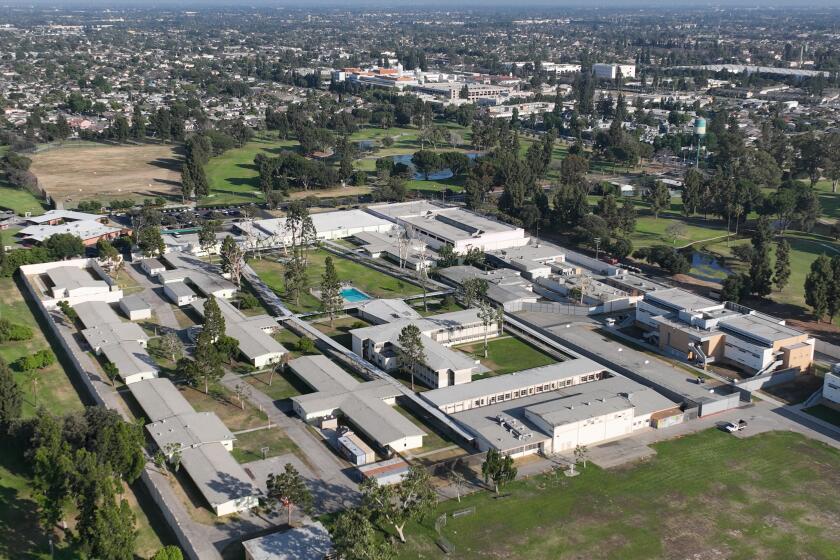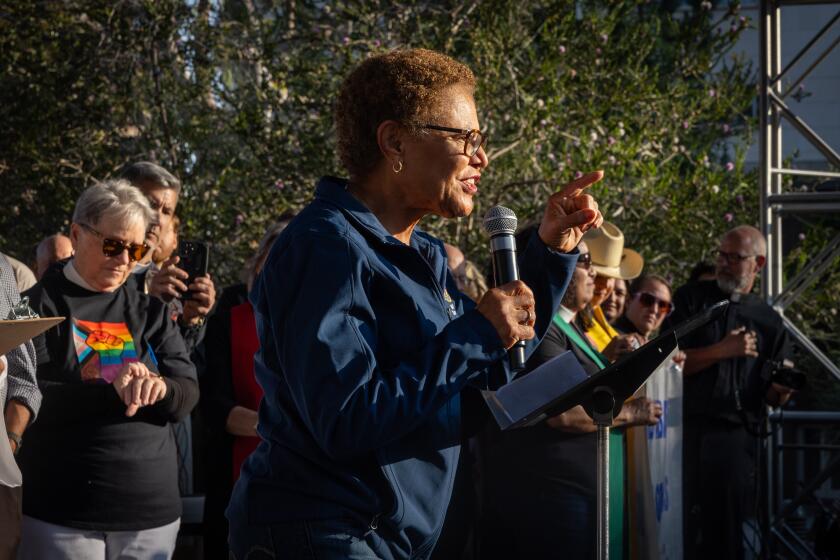Who says Los Angeles has no past?Sitting...
- Share via
Who says Los Angeles has no past?
Sitting in the heart of the Mid-Wilshire district, alongside towering office buildings and crowded streets, is an attraction that no other U.S. city can boast: a graveyard for saber-toothed cats, dire wolves, imperial mammoths and Los Angeles’ first known murder victim.
Since the turn of the century, more than 3 million fossils have been discovered in the muck and ooze of the La Brea Tar Pits, a 23-acre site near Wilshire Boulevard and Fairfax Avenue. The site today includes a museum and viewing area. But back in the early 1900s, it was better known for something else that lay beneath the soil--oil.
In the 1860s, Rancho La Brea was purchased for $2.50 an acre by Maj. Henry Hancock and his brother John, who quarried asphalt and shipped it to San Francisco to pave the city’s streets. After the quarry was abandoned, water gradually filled the site, creating a small lagoon.
Thousands of tar-soaked bones, considered a curiosity and a nuisance, were first recognized as fossils by William Denton, a friend of the Hancocks, in 1875. But it was not until 1899 that William Orcutt, an engineering and geology graduate of Stanford University working for Union Oil (now Unocal Corp.), began removing and researching fossils in the La Brea Tar Pits. Some bones were identified as belonging to the extinct saber-toothed tiger, dire wolf and giant sloth.
From 1901 to 1905, as oil drilling at the site began, further scientific excavations were conducted by John C. Merriam of UC Berkeley and his students, who uncovered and identified the skeletal remains.
In 1913, Navy Capt. George Allen Hancock, Henry’s son, allowed Los Angeles County to excavate the site for two years. During this time, more than 750,000 bones were unearthed and hundreds of oil wells were erected. In 1915, Hancock deeded the 23-acre rancho to the county for excavations and research.
Only one human skeleton has been found, a 25-year-old Indian woman who died 9,000 years ago alongside her pet dog. Believed by the museum to be Los Angeles’ first known murder victim, her skull was crushed by a blunt object, possibly a grinding stone.
In 1972, George C. Page, a local industrialist and philanthropist, offered to build a museum that would house the fossils and where visitors could learn the history of one of the greatest concentrations of prehistoric remains in the world.
In 1975, while the museum’s foundation was being dug, workers discovered, for the first time, entire animals that had been trapped in the tar when they came to drink from a nearby stream.
Today, life-size fiberglass models of imperial mammoths stand on the edge of the pool, posed in a struggle to escape the tar beneath the water. The area, a major source of oil and gas in the century’s early decades, now supports only a few producing wells. Nearly 3 million fossils have been excavated from the site over the last 90 years.
More to Read
Sign up for Essential California
The most important California stories and recommendations in your inbox every morning.
You may occasionally receive promotional content from the Los Angeles Times.













